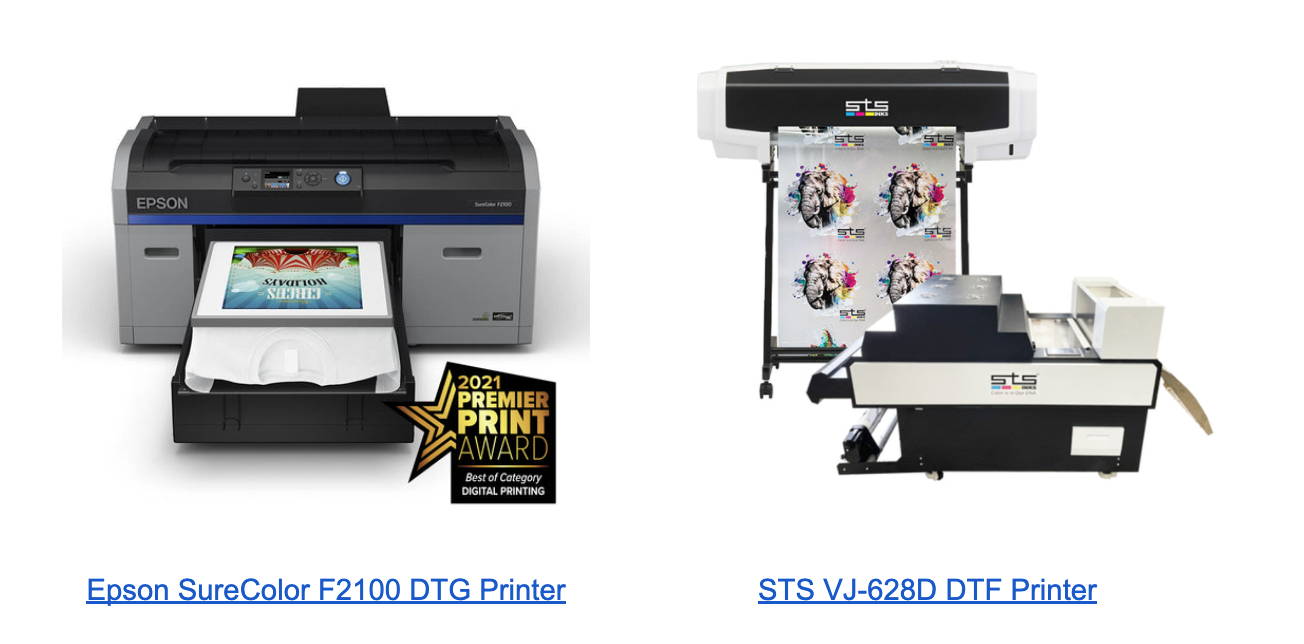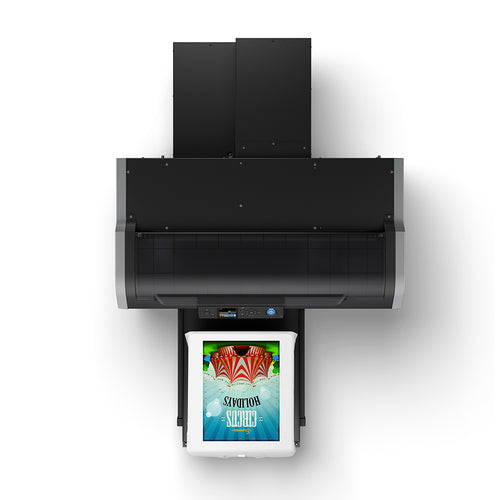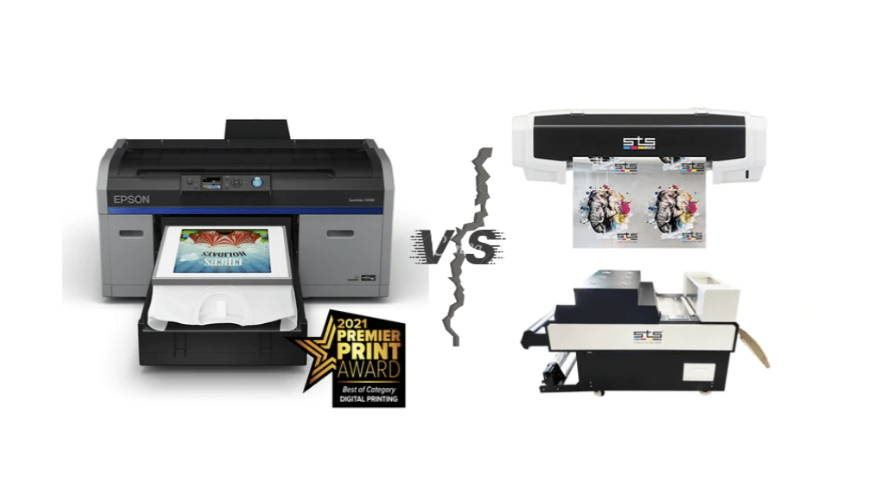Epson F2100 DTG vs. Mutoh VJ628D DTF
Direct to Film (DTF) printers are very popular these days for their ability to produce vibrant colors, graphic patterns, and great textures. Here at AA Print Supply, we wanted to answer one of the most frequently asked questions from our potential customers who wish to get into the direct to film printing business.
Should I buy an Epson F2100 Direct to Garment Printer or STS Mutoh VJ628D Direct to Film Transfer Printer?

The DTF Transfer method is an emergence in printing technology that enables print transfers onto garments or other materials and utilizes a piece of heat-press equipment. To know more about the process, here is the only guide you’ll need!
There’s a dilemma mainly because we understand that the Epson F2100 direct to garment printers also can produce high-quality direct to film transfers. Hopefully, this article can help you make the most sound decision for your purchase.
Please note that this is not a direct comparison on DTG printing vs DTF printing. If you are interested in learning more about their key differences, check out this article on Direct to Garment Printing vs Direct to Film Printing - What's Best?
Topics in Discussion:
1. Common Advantages on Both Epson F2100 and STS Mutoh VJ628D Direct to film Printer
2. What is Better about the Epson F2100
3. What is Better about the Mutoh VJ628D
4. Conclusion
Common Advantages on Epson F2100 DTG Printer and STS Mutoh VJ628 DTF Printer
DTF Technology
They both can do direct-to-film printing
Ability to decorate on many different types of garments such as cotton, polyester, nylon, tri-blend lend, waterproof clothes, some leather, and wood.
Brand & Japanese Manufacturing
Its brand and Japanese manufacturing assures that it has a good warranty and that it’s made with very high-quality control standard
Both Mutoh and Epson have been the leaders in this printing industry for a very long time. A lot of Chinese DTF printers are available on the market but they either lack in quality or they have no support/after-sales service. However, there has been an increasingly positive outlook for China-made printing equipment as they strive for manufacturing efficiency, quality improvement, and output reliability.
Oeko Tex Certified Inks
Certification from ECO PASSPORT by OEKO-TEX® means it’s safe for adults, children and babies.
Printhead System
Original Epson Printhead system: Variable dot sizing, small/compact, resolution up to 1440x1440
Mutoh STS VJ628D uses Epson DX7 printhead: 8 nozzle lines (corresponding with 8 independent ink channels), 1.5 pico litre min. droplet size, eco-solvent and mild solvent ink compatibility
Epson F2100 uses PrecisionCore TFP printhead: PrecisionCore TFP 10-channel, drop-on-demand, inkjet printhead with ink-repelling coating technology.
Maintenance
Does not involve as much heavy maintenance compared to other equipment in the market.
Safety Approvals
UL (MET), FCC (Class A), CSA, CE, EMC
Installation
Both are very easy to install, and take less than 2 hours!
Here is the Mutoh STS DTF VJ-628D installation video:
You can also view the Epson F2100 Setup here.
Technical Support
We at AA Printing Supply provide technical support, endorse both printers,and provide full training on them. We have been in this printing industry since 1986. We have the technical knowledge to equip you for success.
Why would you choose the Epson F2100 DTG Printer vs. STS Mutoh VJ628D DTF System?

Multipurpose capability: Able to do both DTG and DTF printing methods
dual functionality in one machine
Warranty and Service Program
Your purchase will come with a standard 1-year Epson Preferred Service that covers the printer, genuine Epson optional accessories, and Epson software. Get free technical phone support Monday thru Friday from 6:00am until 6:00pm PST. If required, you can easily get a next-business day onsite service! The warranty includes all parts, printheads and labor.
See the features for yourself here:
What's the catch?
The product dimensions are 985 x 1,425 x 490 mm (Width x Depth x Height) and it weighs 80 kg. Make sure you have enough space for it in addition to your other equipment. After all, it takes space to handle professional direct-to-garment operations safely and efficiently.
For its price point, you have to consider you can achieve your Return on investment (ROI) at a reasonable time. Once you understand the costs associated with it, you have to be able to charge prices accordingly.
Since Direct-to-Garment printing requires pretreatment, a lot find this process to be a learning curve. You should know that a lot of time has to be spent on learning how to manage the different variables associated with printing whether its pretreatment, graphics design, resolution, and file types. Assess your existing knowledge on this and manage your expectations when you get to the printing stage.
You can print on all kinds of material but the longevity of the print is not always assured. DTG ink chemistry works best with 100% cotton and high cotton textiles but it won't work as well as with 100% polyester without extra work put into it.
Conclusion
In the end, every customer's needs are different. We often see customers mistakenly making decisions based on speed and price budget only but we would suggest you consider looking at the other features such as warranty, service, and maintenance time/cost. We are always here to help you make your decision easier as much as possible, please feel free to contact us at (215) 634-2235 or start by completing this form.

